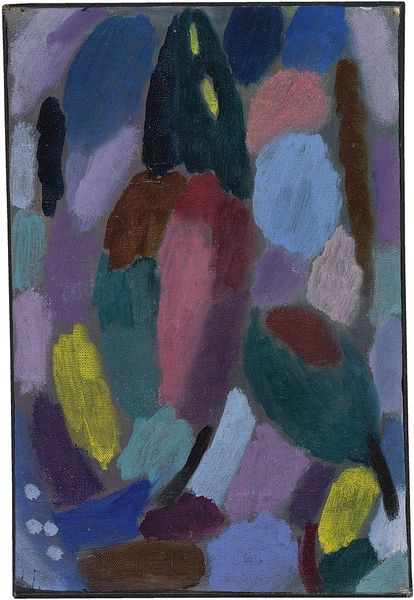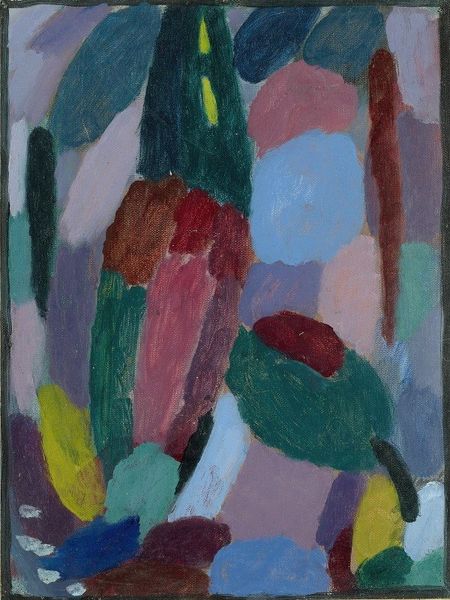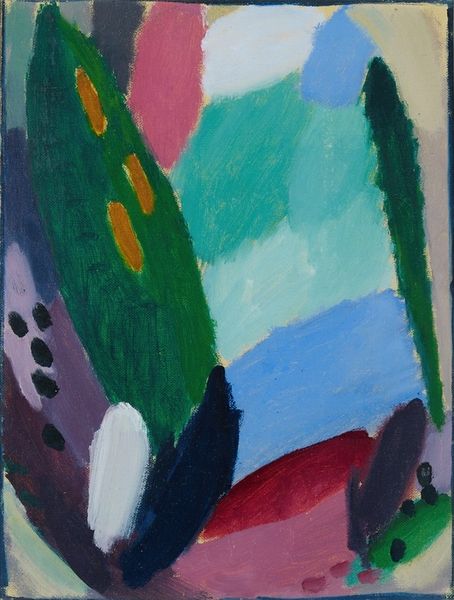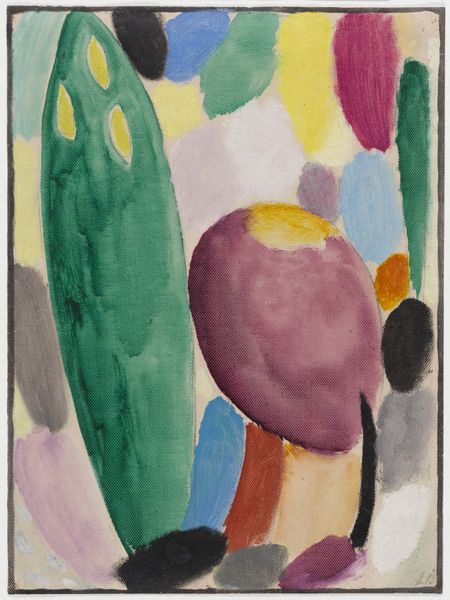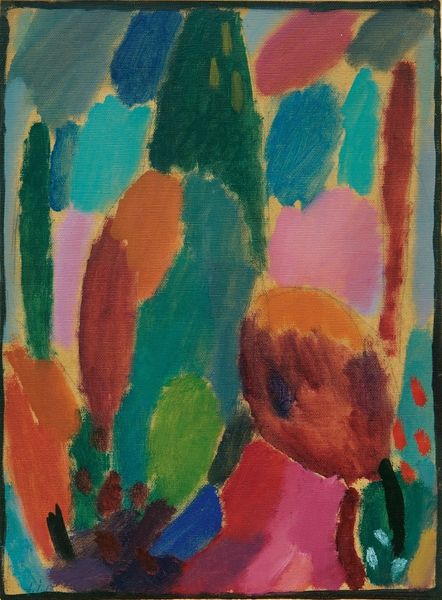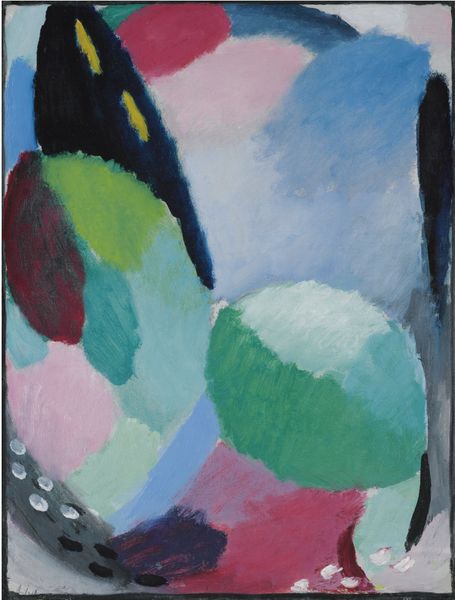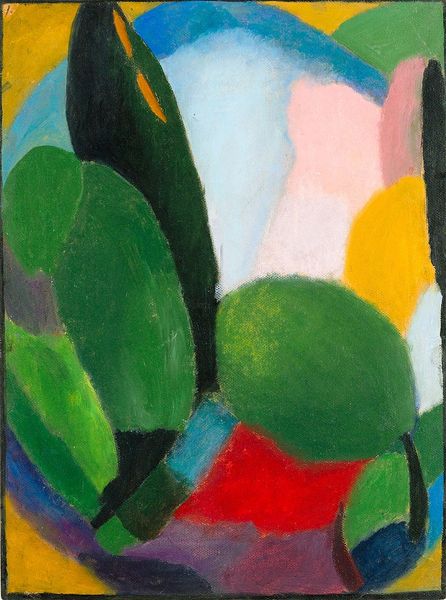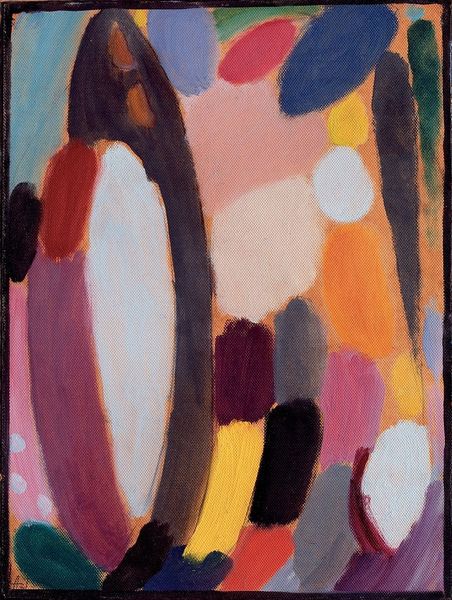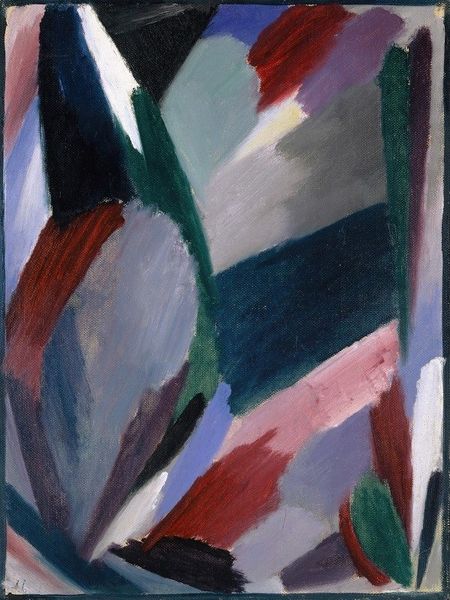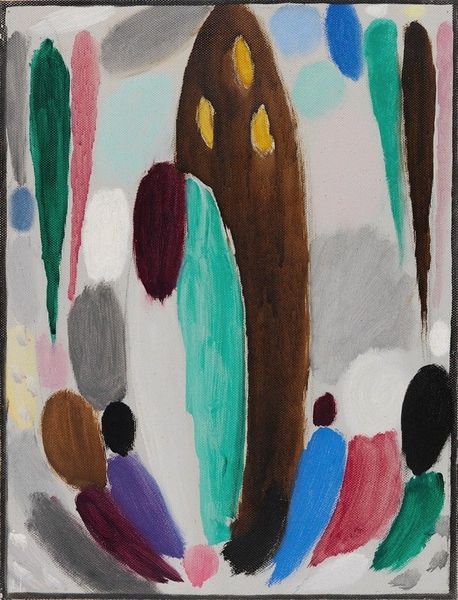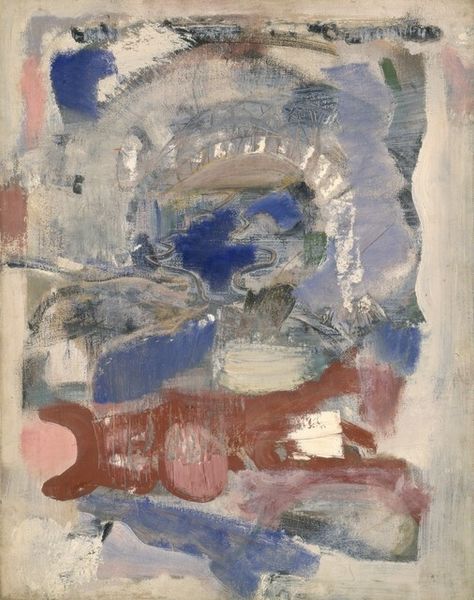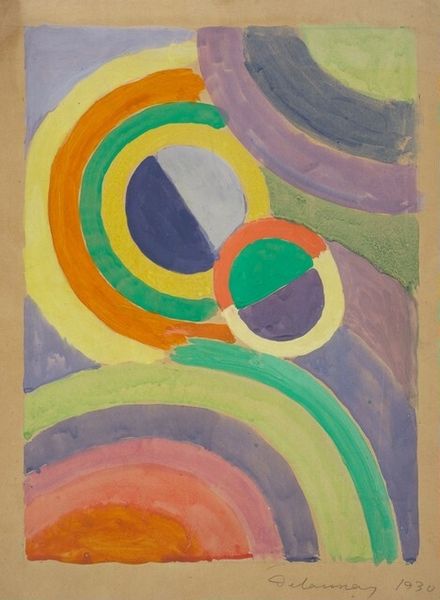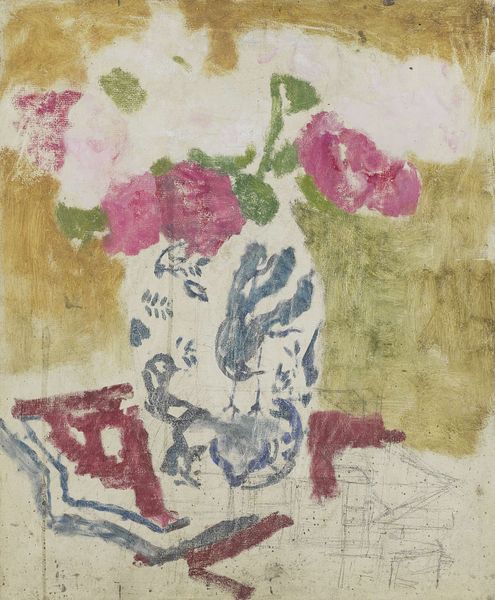
painting, watercolor
#
water colours
#
painting
#
abstract
#
watercolor
#
geometric
#
expressionism
#
abstraction
Copyright: Public domain
Curator: Immediately, I'm struck by the gentleness of "Variation: Träumerei". The pastel hues create a quiet, almost meditative atmosphere. Editor: Indeed. Let’s contextualize this a bit. Painted by Alexej von Jawlensky in 1916, it’s an intriguing example of his exploration of abstraction using watercolor on paper. He was deeply involved with the Expressionist movement at the time, wasn't he? Curator: Precisely. What I find particularly fascinating is how the geometric forms hint at figuration without fully committing. Those ovular shapes, almost like simplified faces or landscapes... do they trigger anything specific for you? Editor: The two yellow marks on top of the central green mass immediately call to mind a primitive depiction of eyes or perhaps a celestial being, a figure from folklore rendered in abstraction. But there is sadness, melancholy, even. The "Träumerei," or Reverie, hints at yearning and the unrealizability of dreams. Curator: That sense of yearning makes perfect sense considering the period. Jawlensky created this during World War I, a time of immense social upheaval and personal distress. The Russian Revolution must have profoundly affected him and his artistic milieu. Editor: Undoubtedly. And while abstract, this resonates with universal themes of sorrow and transcendence. Look how those repeated ovals feel almost like votive offerings. Jawlensky distills complex emotions into elemental forms. What’s your perspective on the historical positioning? Curator: Historically, I view this as a clear indicator of Expressionism's transition toward more simplified forms during a period of socio-political upheaval. Artists searched for a new visual language to express the intangible horrors of war. It's a powerful example of abstraction becoming a conduit for profound emotional expression and cultural introspection. Editor: Exactly, making "Variation: Träumerei" a vivid echo of its time, reflecting on the role of cultural symbolism in troubled times and offering new forms for traditional themes. Curator: It certainly does. Thank you for enriching my perspective, especially noting the element of grief that exists so obviously within this dreamlike image. Editor: A worthwhile consideration on a beautiful work, I think.
Comments
No comments
Be the first to comment and join the conversation on the ultimate creative platform.
